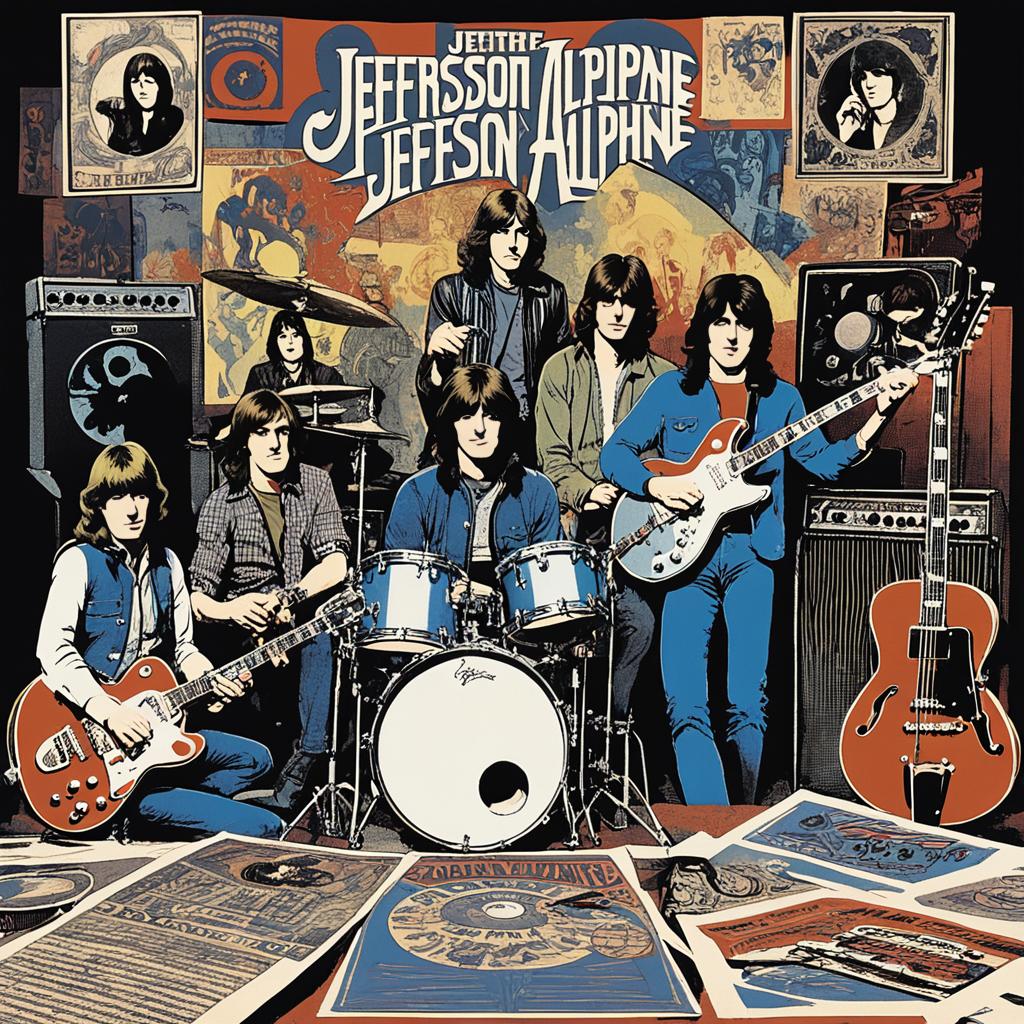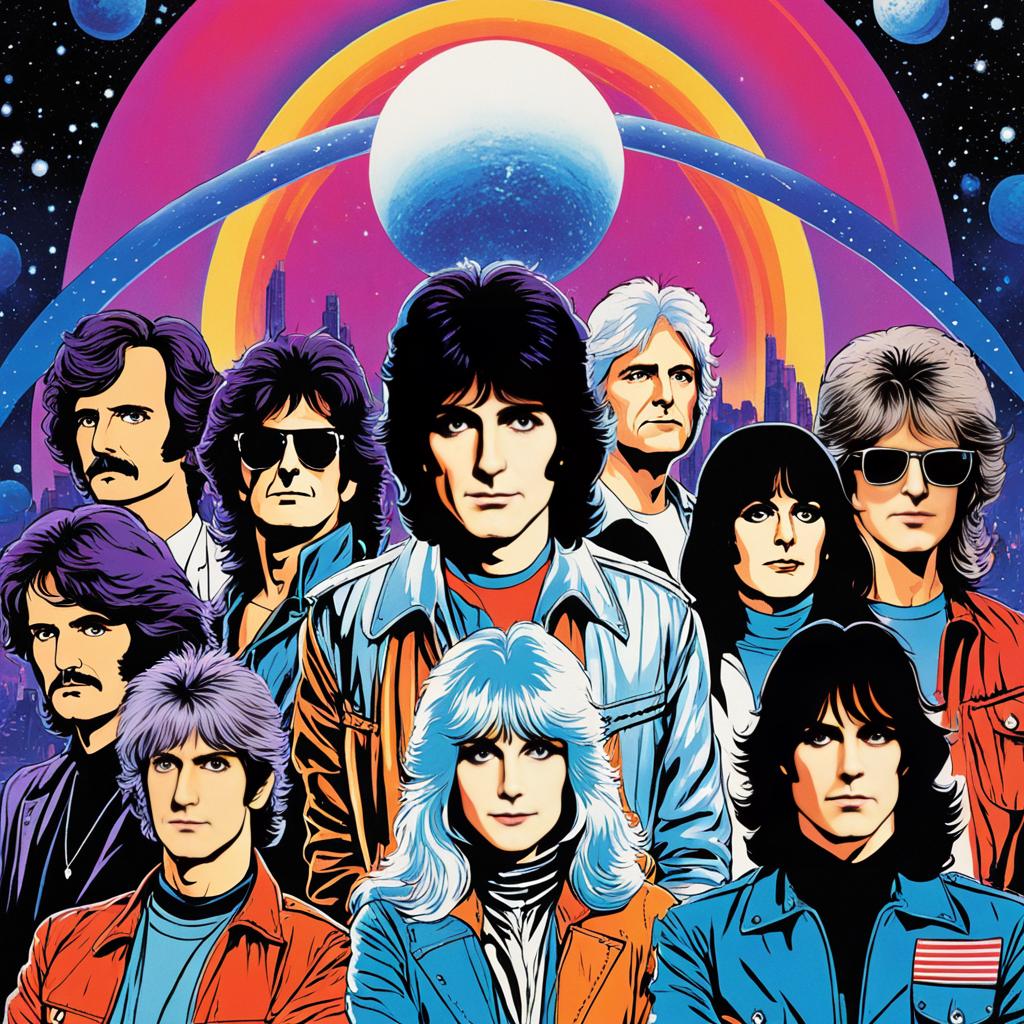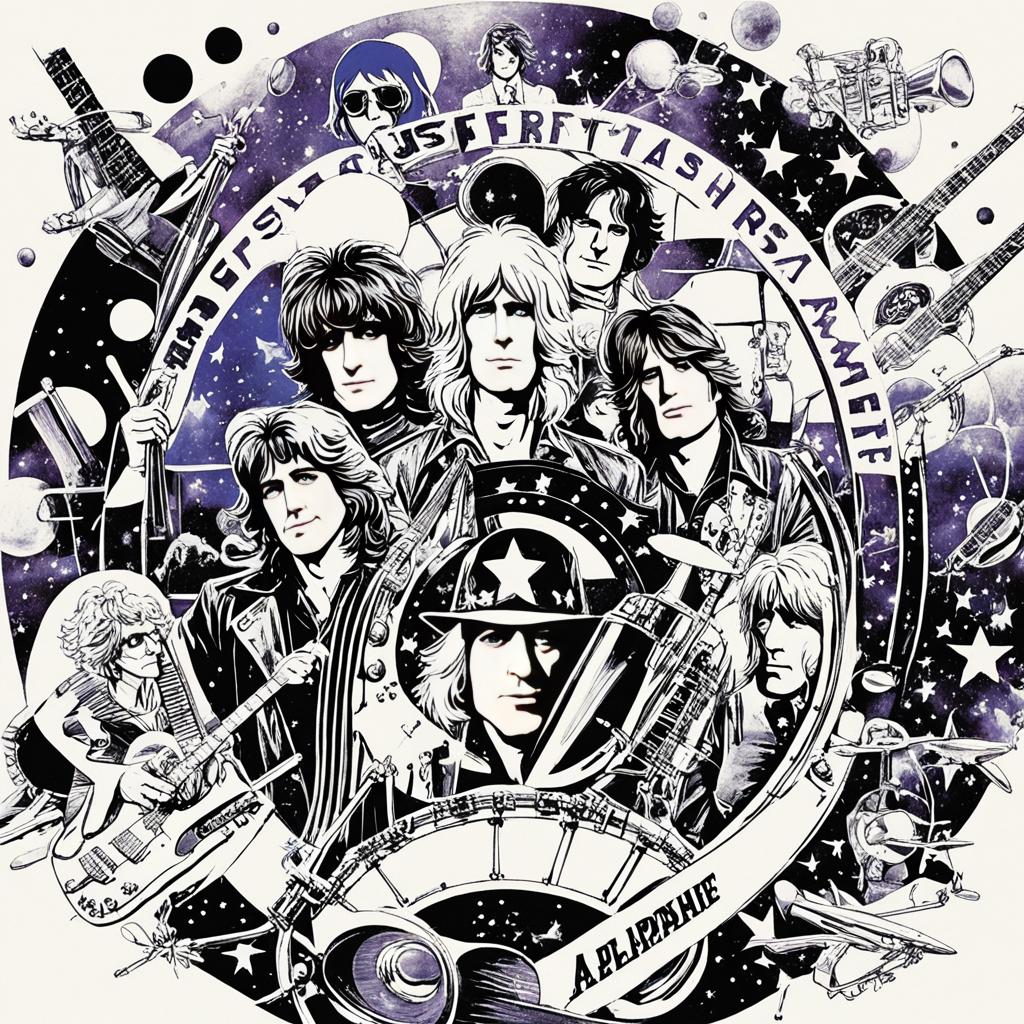If you’re a fan of rock music, chances are you’ve heard of Jefferson Airplane. Known for their iconic psychedelic sound and unforgettable performances, Jefferson Airplane played a crucial role in shaping the rock music landscape of the 1960s. But did you know that there is another band closely linked to Jefferson Airplane? The question remains: Are Jefferson Starship and Jefferson Airplane the same?
While the two bands have connections and share some members, they are not exactly the same. Jefferson Starship emerged as a new entity in the wake of Jefferson Airplane’s dissolution in the early 1970s. With a shift towards a more commercial sound, Jefferson Starship achieved chart-topping success and continued to evolve over the years.
In this article, we will take a closer look at the formation and early years of Jefferson Airplane, the evolution into Jefferson Starship, the changes and challenges faced by the band, the transformation into Starship, and the end of Starship. We will explore the distinctive characteristics of each band and delve into the reasons behind their unique sounds and legacies. So, let’s dive in and discover the fascinating journey of Jefferson Airplane and Jefferson Starship!
The Formation and Early Years of Jefferson Airplane

Jefferson Airplane, one of the iconic rock bands of the 1960s, came into existence in San Francisco in 1965. The band was formed by Marty Balin, Paul Kantner, Grace Slick, and other talented musicians.
From the very beginning, Jefferson Airplane captured attention with their psychedelic sound and mesmerizing live performances. Their music resonated with the counterculture movement of the era, and they quickly gained a devoted following.
The band’s early years were marked by the release of several hit songs that have become classics in rock music. Notable tracks such as “Somebody to Love” and “White Rabbit” showcased Jefferson Airplane’s distinct sound and lyrical depth.
Jefferson Airplane was at the forefront of the counterculture movement and played a significant role in the cultural shift that took place during the Summer of Love. Their music was a fusion of rock, folk, and psychedelic influences, creating a unique and captivating sound that resonated with audiences.
The band’s early success catapulted them into the mainstream, and they headlined major music festivals such as Monterey Pop and Woodstock. Their electrifying performances and thought-provoking lyrics made them one of the most influential bands of their time.
In summary, the formation and early years of Jefferson Airplane marked the beginning of a musical journey that would transcend boundaries and leave a lasting impact on the rock music landscape. Through their innovative sound and powerful performances, they became pioneers of the psychedelic rock genre and captured the spirit of a generation.
The Evolution into Jefferson Starship

After the dissolution of Jefferson Airplane in the early 1970s, Paul Kantner and Grace Slick formed a new band called Jefferson Starship. The lineup of Jefferson Starship included some former Jefferson Airplane members as well as new additions. They shifted their sound to a more commercial and pop-oriented style, which led to chart-topping hits like “Jane” and “We Built This City.”
- The formation of Jefferson Starship marked a new chapter for the members of Jefferson Airplane, allowing them to explore different musical directions.
- The band incorporated elements of rock, pop, and even some progressive rock influences into their sound.
- Jefferson Starship’s music appealed to a wider audience, expanding their fan base and reaching the top of the charts.
- The success of their new sound brought them commercial success and recognition in the music industry.
The evolution into Jefferson Starship allowed the former members of Jefferson Airplane to continue creating music together while adapting to the changing musical landscape. Their shift towards a more commercial sound marked a significant moment in their career and contributed to their enduring legacy in the rock music scene.
Changes and Challenges within Jefferson Starship

Jefferson Starship, like any band, experienced its fair share of changes and challenges over the years. The dynamic nature of the music industry and the personalities involved often resulted in lineup adjustments and internal conflicts.
One significant change occurred in 1971 when Marty Balin, one of the founding members of Jefferson Starship, left the band. Balin’s departure marked a turning point for the group, as his unique vocal style and songwriting contributions were highly regarded. This change required the band to adapt and find a new direction.
As time went on, more members of Jefferson Starship departed, leading to a series of lineup changes. These shifts in personnel not only affected the band’s sound but also its cohesion and chemistry. While some changes brought fresh talent and perspectives, they also presented challenges in terms of maintaining a consistent identity.
The challenges within Jefferson Starship were not only limited to lineup changes. Internal conflicts, creative differences, and interpersonal dynamics contributed to an increasingly tense atmosphere within the band. Despite these challenges, the members of Jefferson Starship persevered and continued to release music, achieving success along the way.
However, as tensions grew and the band’s direction shifted, Jefferson Starship faced a significant challenge when Paul Kantner, another founding member, decided to leave. Kantner took the “Jefferson” part of the band’s name with him, leaving the remaining members to navigate yet another transformative phase in their career.
These changes and challenges within Jefferson Starship tested the band’s resilience and adaptability. They required the remaining members to redefine their identity and chart a new course. How they responded to these challenges would ultimately shape the future of the band and its musical journey.
As the band moved forward, the name Jefferson Starship would continue to be associated with new successes and challenges, ultimately leaving a lasting mark on the music industry. Next, we will explore the transformation of Jefferson Starship into Starship and the subsequent changes that followed.
Lineup Changes in Jefferson Starship
| Year | Member Departed |
|---|---|
| 1971 | Marty Balin |
| 1973 | Grace Slick (temporary departure) |
| 1975 | Paul Kantner |
| 1978 | Grace Slick |
| 1984 | Paul Kantner (temporary departure) |
The Transformation into Starship
After Paul Kantner’s departure, the remaining members of Jefferson Starship continued their musical journey under a new name – Starship. Dropping the “Jefferson” from their title was a result of legal disputes with Kantner. This transformation marked a significant shift in their sound, direction, and commercial success.
With a fresh sound and revamped lineup, Starship embraced a more mainstream pop rock style, which resonated with audiences in the 1980s. Their innovative approach to music led to chart-topping hits like “Sara” and “We Built This City,” solidifying their status as one of the era’s most successful bands.
This new direction, however, wasn’t without its controversies. Fans of the original Jefferson Airplane sound expressed criticism towards the band’s shift towards a more commercial sound. Despite the mixed reactions, Starship’s transformation allowed them to explore new musical horizons and reach a wider audience.
The boldness to reinvent themselves paid off for Starship, as they achieved immense popularity and commercial success with their catchy pop rock anthems. Their ability to adapt to evolving musical trends and engage fans across different generations cemented their place in music history.
The End of Starship and Beyond
As the late 1980s rolled in, Starship encountered further lineup changes and struggled to maintain their previous level of success. In 1988, renowned vocalist Grace Slick departed from the band, leaving a void that was challenging to fill. Despite this setback, Starship soldiered on for a few more years with new members, striving to keep their musical journey alive.
However, the end of Starship was ultimately inevitable. The band faced diminishing returns and internal conflicts that proved insurmountable. In the face of these challenges, the members of Starship decided to disband, each venturing off onto their own unique musical paths.
While Starship may have reached its conclusion, the legacy of both Jefferson Airplane and Jefferson Starship continues to resonate within the realm of rock music. These bands have left an indelible imprint on the genre, shaping its trajectory and influencing future artists.
But what lies beyond the end of Starship? The impact of their music extends far beyond their time together, reverberating through the annals of rock history and inspiring generations to come.
| Key Points | Details |
|---|---|
| Lineup Changes | Further changes within Starship’s lineup affected their stability and creative direction. |
| Grace Slick’s Departure | Grace Slick’s departure in 1988 marked a significant turning point for the band. |
| The Disbandment | Ultimately, Starship disbanded as members pursued their individual musical endeavors. |
| Continued Influence | The lasting impact of Jefferson Airplane and Jefferson Starship endures, leaving an indelible mark on the landscape of rock music. |
Conclusion
In conclusion, Jefferson Airplane and Jefferson Starship share a connection in their history but are not the same band. Jefferson Airplane made a significant impact in the 1960s with their pioneering psychedelic rock sound, headlining iconic music festivals like Monterey Pop and Woodstock. Their hit songs “Somebody to Love” and “White Rabbit” became anthems of the counterculture movement.
Meanwhile, Jefferson Starship emerged in the 1970s with a new lineup, including former Jefferson Airplane members. The band shifted their style to a more commercially successful pop rock sound, producing chart-topping hits such as “Jane” and “We Built This City.” Jefferson Starship became a prominent presence in the music industry during the 1970s and 1980s.
Both Jefferson Airplane and Jefferson Starship have made lasting contributions to rock music. Their innovative sounds and cultural impact continue to influence musicians in the United States and beyond. While their paths diverged, the legacies of both bands serve as a testament to their role in shaping the evolution of rock music.


